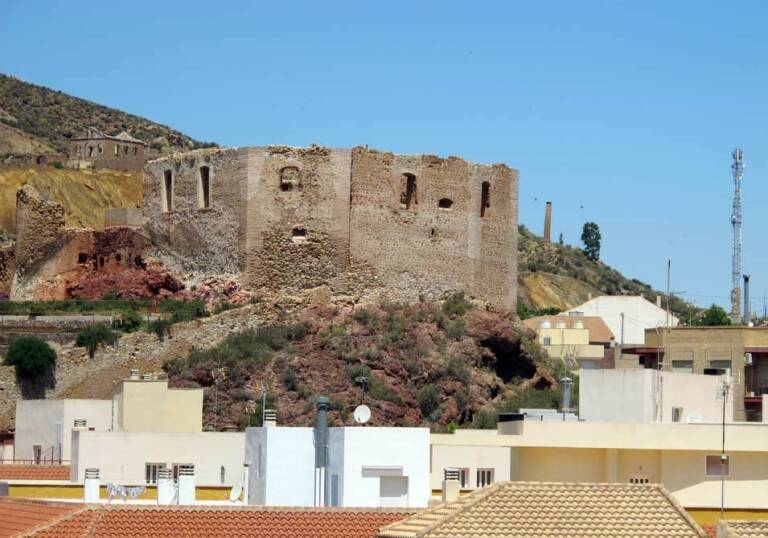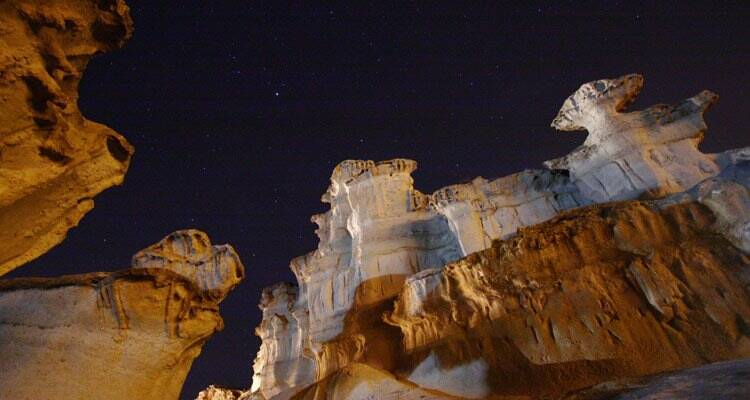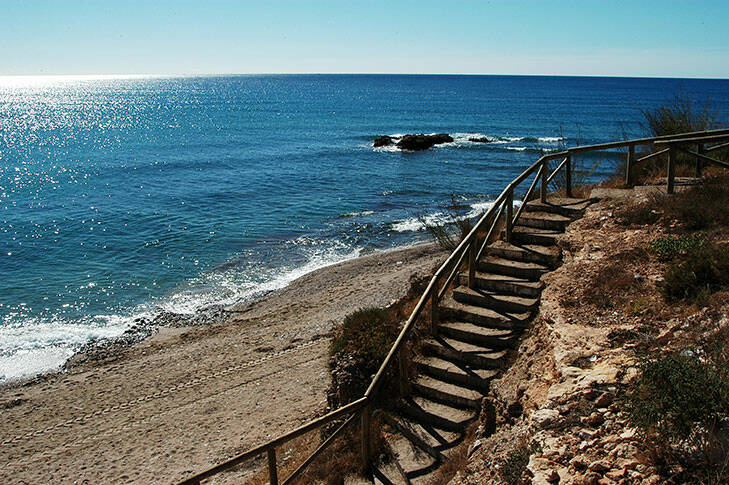Mazarrón is not only the coast: plans for this summer from the mountain to the bay
MAZARRÓN. The Ermita Beach, the Bolnuevo Erosions, the whale watching or the sight of a Phoenician Ship are some of the activities that Mazarrón Bay offers. The city has two urban centers as important as they are different: the port and the old town, 5 km from the coast. Its beaches, mostly of fine sand with little urban pressure, are a great tourist attraction throughout the year.
Almazarrón, known for its mining wealth
The name of Mazarrón is linked from its origin to the mining wealth of its mountains, rich in lead, zinc, silver, iron, alum and red blood. In fact, Mazarrón, (formerly known as Almazarrón) means: “a place where there is a lot of almagre”. This red clay was used to paint and dye fabrics and other elements, and it gave the bay its name due to the abundance in the territory and the wealth contributed to the area.
Already in Phoenician, Punic and Roman times immense works of mining operations were carried out, leaving abundant archaeological remains. The Arabs also settled in the area, attracted by the abundance of minerals.
In the city you can visit the Roman Salting Factory, where the remains of what was one of the main late-Roman salting and fish complexes of the time are preserved; in addition to knowing the recipe for the famous “garum” fish sauce.
After the Christian Reconquest, the place called Casas de los Alunos de Almazarrón was formed as a result of the mines that began to be exploited in the s. XV. Its strategic position turned the bay into a defensive bastion for the neighboring lands of Lorca and Cartagena, as evidenced by its numerous defensive towers that run along the 35km of coastline: the Torre de Vieja de la Cumbre, the Torre de los Caballos or the Torre of Santa Isabel among others.
However, contrary to what is believed, the well-known Castillo de los Vélez was not built for defensive purposes like the other towers, but to demonstrate the power and supremacy of the family.

Castle of the Vélez. Photo: MURCIATURÍSTICA
In modern times, the opulence that drove the land was also red as reddish, but this time, coming from the orchard. The Mazarrón tomato is a well-known product inside and outside of Spain thanks to the particular characteristics of the area: humidity and temperature especially suitable for cultivation.
Fishing tradition
As a result of its rich history, the streets of Mazarrón also contain numerous monuments, highlighting: the Town Hall, the Old Cultural Athenaeum (in modernist style), the church of San Andrés (with a Mudejar coffered ceiling) and the convent of La Purísima (the patron saint of the town). The fishing and seafaring tradition is evident in the city thanks to its inshore fishing boats and its fish market.
Bolnuevo erosions

Bolnuevo erosions. Photo: MURCIATUSTICA
The Bolnuevo erosions, or also known as Gredas de Bolnuevo, were declared a Natural Monument of the Region of Murcia on March 21, 2019.
The formation of the Strait of Gibraltar took place 5.3 million years ago and represented a great change for the coastline of the Mediterranean coast: the sea stopped being the small salty lagoon that it was to join the Atlantic Ocean. In just two years of this opening, the sea level rose occupying spaces hitherto isolated by a phenomenon known as “marine transgression”.
The characteristic yellowish walls of this area arose when, as these spaces were covered by the sea, the marine currents dragged and deposited materials such as marls, silts, sandstones and gravel that, when they settled, created this marine platform.
Las Gredas de Bolnuevo are a relief subject to continuous transformation. Its profile has suffered wear due to the erosive action of wind and water, but this has never been uniform since the materials present different levels of resistance to meteorological phenomena.
Routes, beaches and marine fauna

La Raja beach. Photo: MURCIATURÍSTICA
The municipality is framed by part of the coastal mountain ranges of the Region of Murcia, mainly the Sierra de Almenara and Las Moreras in its western part and the Sierra del Algarrobo in the eastern part. There are 35 routes to do by bike in these places perfectly equipped for the enjoyment of passersby.
The end of the mountainous terrain gives rise to the bay and the coves that make up the coastline, some as spectacular as La Reya, Bahía, El Castellar or El Mojón beach.
Leaving the mountains even further behind, you can experience one of the most unforgettable marine adventures: sailing the high seas in search of dolphins, sea turtles, sunfish, birds … or go diving in the Cabo Tiñoso Marine Reserve




